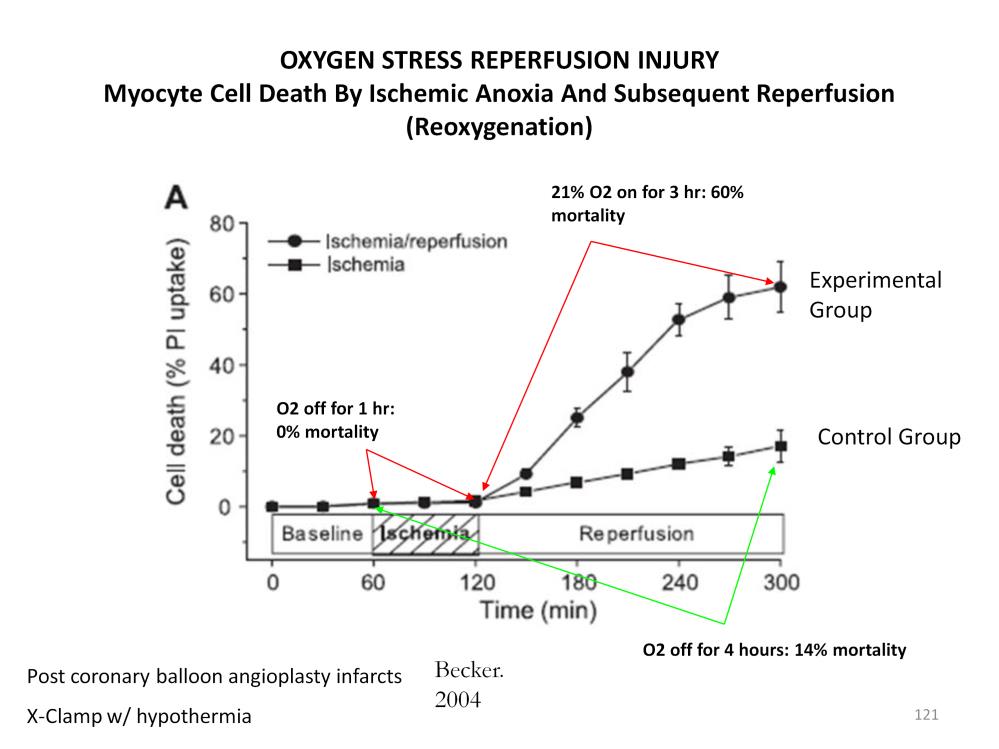
This experiment* illustrates the impact that oxygen has on hypoxic/ischemic cells. As a control group, a culture of chicken cardiac myocytes was subjected to four hours of simulated ischemia by removing oxygen from the culture environment. At the end of one hour very few of the cells had expired. At the end of four hours 14% of the cells had expired.
The experimental group was exposed to only one hour of simulated ischemia after which 21% oxygen was reintroduced to the culture environment. Over the next three hours of simulated reperfusion, 60% of the cells expired. Why was the experimental group mortality rate so much higher than the control group? During the one hour simulated ischemia, the experimental group cells entered into anaerobic metabolism. This produced metabolic acids and changed the internal pH of the cells which deactivated the antioxidants. When oxygen was reintroduced after only one hour, reactive oxygen species destroyed vital cellular components resulting in the death of the cells. No oxygen was re-introduced into the control group. So even after four hours of anoxia very few cells died.
This experiment demonstrates the lethality of oxygen stress and suggests that cells may benefit from continued ischemia until the intracellular pH can be corrected and the antioxidants reactivated. This further suggests that hypoxic/ischemic patients who are mechanically reperfused without first correcting intracellular pH and reactivating the antioxidants will be subjected to the extreme morbidity of reperfusion injury.
The use of balloon angioplasty (percutaneous transluminal coronary angioplasty, PTCA) is usually very successful in opening obstructed coronary arteries. Occasionally the patient will suffer a post-PTCA cardiac infarction. The assumption is often made that coronary re-stenosis (even after stent placement) is responsible. However an alternate explanation is just as plausible; that the infarction is caused by the reperfusion of hypoxic/ischemic cells after the coronary artery is opened, as this experiment simulates. This reperfusion damage is avoided during cardiac cross clamping by the use of hypothermia.
*Becker LB. New concepts in reactive oxygen species and cardiovascular reperfusion physiology. Cardiovasc Res 2004;61:461-70.

Perfusion Theory is an educational platform for the Oxygen Pressure Field Theory (OPFT). August Krogh’s theoretical concept of the oxygen pressure field is explained and then applied to clinical applications in perfusion practice.